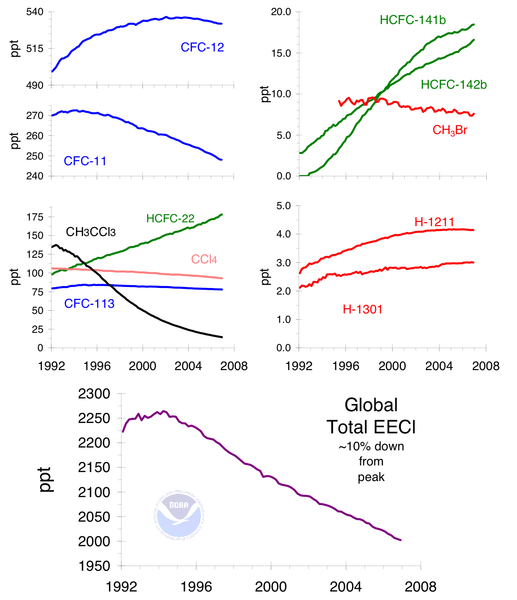Datoteka:Ozone cfc trends.png

Veličina ovog prikaza: 517 × 600 piksela. Ostale razlučivosti: 207 × 240 piksela | 414 × 480 piksela | 662 × 768 piksela | 1.096 × 1.271 piksela.
Vidi sliku u punoj veličini (1.096 × 1.271 piksela, veličina datoteke: 123 KB, MIME tip: image/png)
Povijest datoteke
Kliknite na datum/vrijeme kako biste vidjeli datoteku kakva je tada bila.
| Datum/Vrijeme | Minijatura | Dimenzije | Suradnik | Komentar | |
|---|---|---|---|---|---|
| sadašnja | 00:00, 3. listopada 2016. |  | 1.096 × 1.271 (123 KB) | Cmdrjameson | Compressed with pngout. Reduced by 46kB (27% decrease). |
| 06:11, 6. listopada 2009. |  | 1.096 × 1.271 (169 KB) | Robert Skyhawk | Updated information current to 2008. Upload requested by English Wikipedia user Tobus2 via Images for Upload. | |
| 21:38, 15. siječnja 2006. |  | 1.139 × 1.577 (24 KB) | Maksim | La bildo estas kopiita de wikipedia:en. La originala priskribo estas: CFC gas trends and equivalent chlorine effect. Combined chlorine and bromine in the lower stratosphere (10-25 km), where most ozone loss occurs, leveled off around [ |
Uporaba datoteke
Nijedna stranica ne rabi ovu datoteku.
Globalna uporaba datoteke
Sljedeći wikiji rabe ovu datoteku:
- Uporaba na bg.wikipedia.org
- Uporaba na ca.wikipedia.org
- Uporaba na el.wikipedia.org
- Uporaba na en.wikipedia.org
- Uporaba na eo.wikipedia.org
- Uporaba na es.wikipedia.org
- Uporaba na eu.wikipedia.org
- Uporaba na fi.wikipedia.org
- Uporaba na fr.wikipedia.org
- Uporaba na gu.wikipedia.org
- Uporaba na hi.wikipedia.org
- Uporaba na id.wikipedia.org
- Uporaba na kn.wikipedia.org
- Uporaba na pt.wikipedia.org
- Uporaba na simple.wikipedia.org
- Uporaba na ta.wikipedia.org
- Uporaba na zh.wikipedia.org



